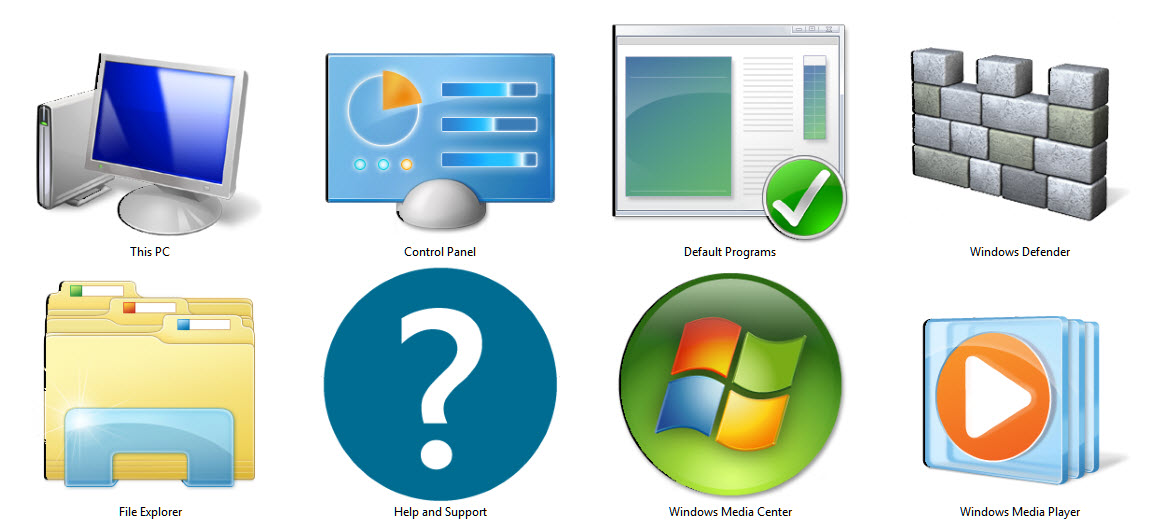


- #Windows 8 create app shortcut how to#
- #Windows 8 create app shortcut install#
- #Windows 8 create app shortcut update#
- #Windows 8 create app shortcut download#
Your shortcut is waiting for you at your desktop. Step 6: When the following shortcut creation confirmation window pops up, click on the button Yes. Step 5: As next, click on Create shortcut option from the menu that expands out. From the right click context menu, click on Show more options. Step 4: Following the above step would open up the Startup menu folder. As next, click on More option and then on Open file location option. Step 3: From the list of apps, find the app that you want to create desktop shortcut for, and right click on it. Step 2: As next, at the top right corner, find and click on the All apps button. Step 1: Firstly, click on the Windows Start icon.
#Windows 8 create app shortcut install#
Read: Install and Run Windows 10 Modern Apps from an External Drive As for applications that you installed through windows store, this method will not work and you will have to head to Method 3. You can use these shortcuts to create your Desktop shortcuts.
#Windows 8 create app shortcut download#
Method 2: By Creating Shortcut from Start Up Menu Folderįor the applications that you download and install from external sources, i.e., not from Windows Store, shortcuts get created in the Windows start up menu folder.
#Windows 8 create app shortcut update#
Update the policies on your clients ( gpupdate /force or by logoff/logon).Step 3: Now browse and find the application that you want to create desktop shortcut for.Ĭlick on the application, drag it and drop it on to the desktop. Note that Desktop ( %DesktopDir%) and All User Desktop ( %CommonDesktopDir%) environment variables are displayed in the GPO console If you want to create an app shortcut in the Public profile (for all computer users), select Location = All User Desktop (disable the “Run in logged-on user’s security context” option since non-admin users do not have the permissions to modify the Public profile). As a result, the application shortcut will appear only for users added to the specified Active Directory security group Select New Item -> Security Group and choose the domain group. Enable the Item-level targeting and click the Targeting button. Then you can use Group Policy Targeting to deploy a shortcut to members of that security group. If you want to create a shortcut for specific users only, add their accounts to a separate AD domain group. If you have selected to place the shortcut on the Desktop of the current user (Location = Desktop), check the Run in logged-on user’s security context (user policy option) on the Common tab. Icon file path: C:\Install\TCPView\Tcpview.exe (a path to the shortcut icon) Target Path: C:\Install\TCPView\Tcpview.exe (a path to the file you want to create a shortcut for) Here you can choose where to place your shortcut: Start Menu, Startup or All User Desktops. In this example, we will put a shortcut only on the desktop of the current user. Target Type: File System Object (you can select a URL or a Shell object here) Create a new shortcut item with the following settings:. Go to the Group Policy Preferences section: User Configuration –> Preferences -> Windows Settings -> Shortcuts. Right-click on the created policy and select Edit. Open the Group Policy Management Console ( gpmc.msc), right-click an AD container (Organizational Unit) you want to apply a shortcut creation policy to and create a new policy (a GPO object) named CreateShortcut. In the same way you can create shortcuts in Windows 10 Start Menu or Quick Access Toolbar. #Windows 8 create app shortcut how to#
In this example we will show you how to create multiple shortcuts on a user’s desktop using Group Policy Preferences (available starting with Windows Server 2008 R2). GPO allows you to create a shortcut for a locally installed app, a URL, an executable file on a shared network folder or a domain controller (the NETLOGON folder). Using Group Policies, you can create a shortcut to a specific app on the desktops of all (or certain) domain users.






 0 kommentar(er)
0 kommentar(er)
